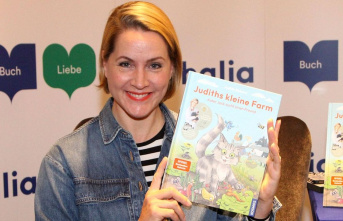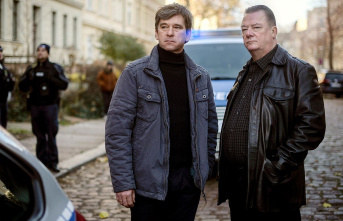Reading books (to you) has a positive effect on your offspring in many ways: The vocabulary is expanded, the way of expression and the ability to concentrate are improved and the imagination is stimulated. Apart from that, the stories are written so well in terms of dramaturgy and language that they captivate children and adults alike. Today like tomorrow.
Already published in 1978, the children's story was awarded the German Youth Book Prize just a year later. Even today, the stories of the little tiger and the little bear flicker across the screens in Germany. And the books also inspire millions of children: the story of how tiger and bear travel to Panama - the country of their dreams, where everything is supposed to be better, bigger and more beautiful than at home - is particularly heartfelt. So it's no wonder why this beautifully illustrated children's book is a true classic. You can find the book here.
The story about the wild robber Hotzenplotz came about out of love for Punch and Judy and his later published book "Krabat" - at that time he bit his teeth on the first paragraph and wanted to write something funny for a change: when he was from Punch and his friend Seppel is wanted because he is said to have stolen a coffee grinder, he captures the two sleuths without further ado. He is supported by the evil magician Petrosilius Zwackelmann - because Hotzenplotz is not that easy to catch. But even Kasperl and Seppel do not want to accept their involuntary imprisonment without doing anything. The book is here.
This cute tale was published in 1967 and is not only extremely poetic, but also incredibly emotional: When winter comes, all the field mice go in search of food - except for one: Frederick. Instead of dealing with grains, nuts, corn and straw, he prefers to collect rays of sunshine, colors and words to bridge the cold, dull and dreary season. Although he is eyed critically by his mouse friends, he diligently continues to capture hopes and dreams. When the supplies of the others are running out, Frederick's hour arrives. Get the book here.
The story was written in 1844 and is still one of the most successful German children's books. It was originally a gift from Heinrich Hoffmann, a Frankfurt doctor, to his three-year-old son. After those around him urged him to have the story printed, the picture book was published in 1845 with its ten illustrated stories in verse. It's about young children who are disobedient or careless - and suffer the cruel consequences of their actions. Even if the children's book is still controversial today, it has been translated into almost 40 languages. You can find the story here.
These boy stories were also published long before our time: at the end of October 1865 the seven pranks were told for the first time. Since then, Wilhelm Busch's early work has been one of the most popular children's books. And that, although the pranks of Max and Moritz also come to a bad end here. Nevertheless, the rascals' stories are a real pleasure to read for young and old: from the widow Bolte, from whom they steal the chickens, to teacher Lämpel, whose whistle the cheeky boys stuff gunpowder into, the boys keep coming up with new ideas for their fellow human beings to annoy. You can find the book here.
This article contains so-called affiliate links. There is more information here.












